Trade Union density refers to the percentage of the workforce who belong to a trade union.
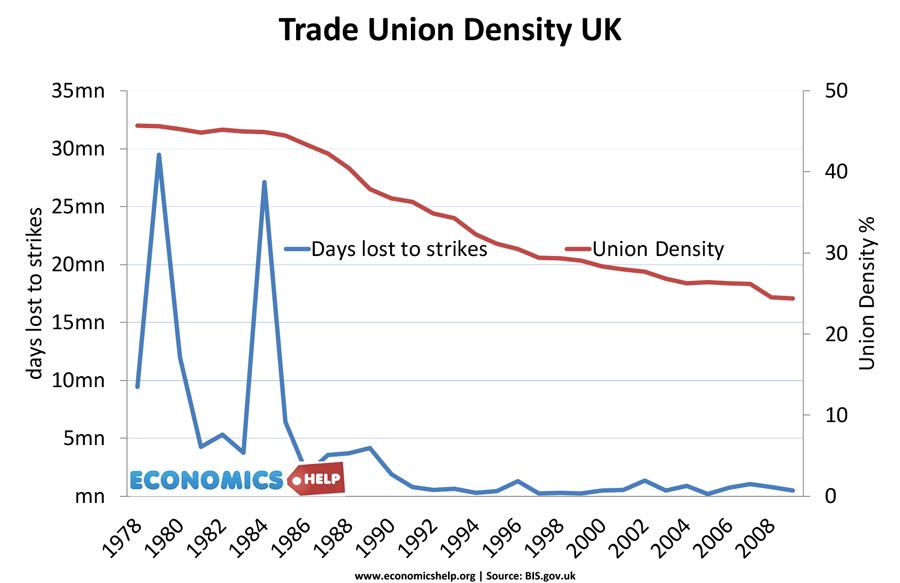
Since the early 1980s, there has been a steady decline in the density of trade union membership in the UK workforce.
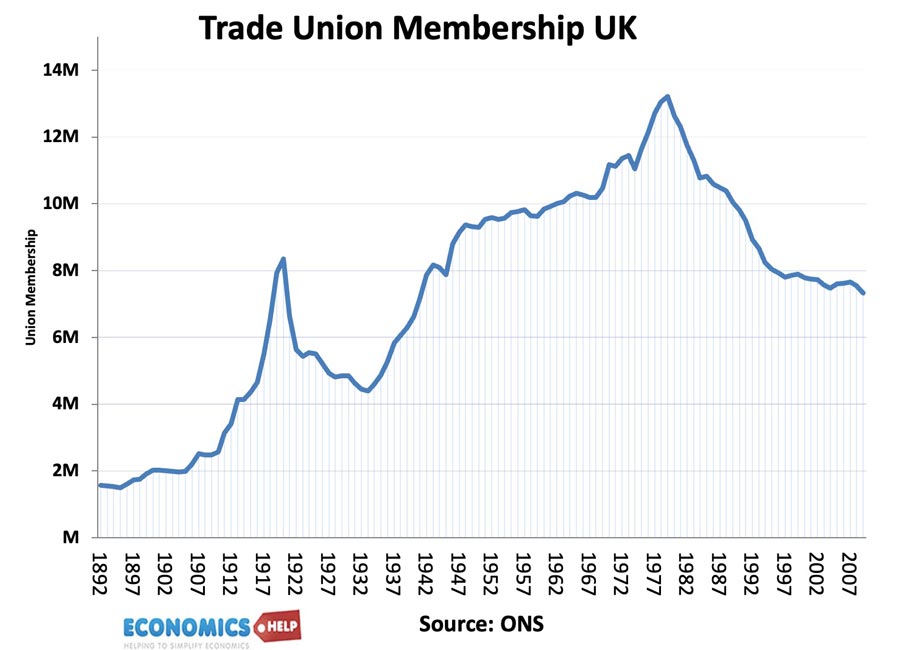
The decline in trade union density – matching the decline in trade union membership.
Trade Union Density by Industry
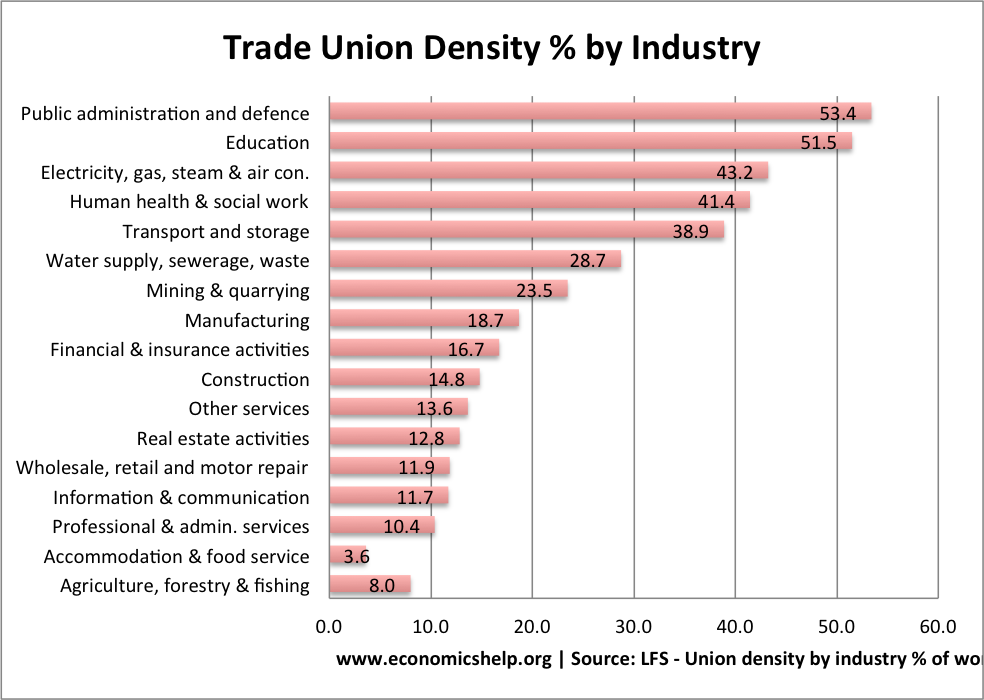
Traditionally, trades unions were strongest in heavy manufacturing. Industries like steel and coal. Sometimes, trade unions even had closed shops. An agreement where someone had to be in a union in order to get a job (ensuring a density of 100%)
However, in the past few decades there has been a marked change. The industries with highest union density are now in the public sector – public administration, education and health care. Mining has a density of only 25%
The lowest union density is in accommodation and food service.
Union Density by Type of Job
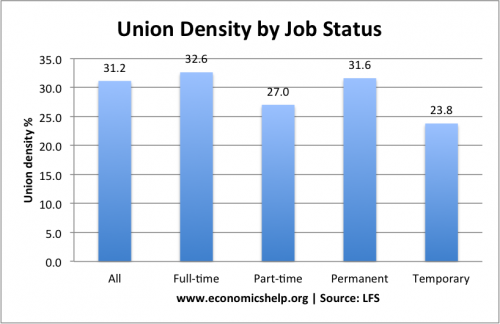
Traditionally, trade unions were stronger in permanent full time jobs. However, the gap between full-time and part time and between permanent and temporary is less than you might expect. Evidence trade unions have expanded into part time and temporary sectors.
The gap is more pronounced for men – with just 18% of men in part time jobs in a union. But, 29.5% of women in part time jobs.
| All | Full-time | Part-time | Permanent | Temporary | |
| All employees | 31.2 | 32.6 | 27.0 | 31.6 | 23.8 |
| Male | 28.4 | 29.8 | 18.4 | 29.0 | 19.1 |
| Female | 34.0 | 37.2 | 29.5 | 34.4 | 28.1 |
Trade
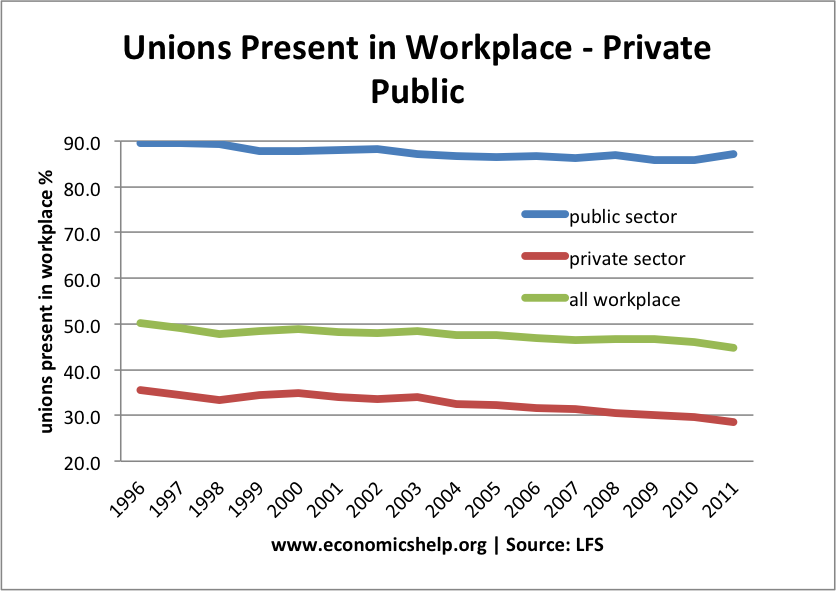
A bit different to union density – The percentage of workplaces where trade unions have a presence. A huge gulf between public and private sector.
Reasons for Decline in Trade Union Density in UK
- Political change. Since early 1980s, the government have introduced legislation making trade unions weaker (e.g. ending closed shops, banning secondary picketing)
- De-industrialisation. Industries which were once the bedrock of the union movement have seen rapid falls in employment. (e.g. coal mining employed nearly 450,000 men in 1945 – now less than 10,000).
- More flexible labour markets. The new industries and sectors which have replaced heavy industry have not lent themselves to trade unions as well. For example, workers in the growing service sector are more likely to be
- No history of unions in new industries. Industries like construction and info and communication have less tradition of trade unions, so it’s difficult to get a strong movement started.
- Increased competitiveness of globalisation encouraged firms to adopt a stronger anti-union stance to try and increase competitiveness.
- Higher long-term unemployment in UK since 1980s, means workers have less power and influence (unemployment stats).
Impact of Decline in Trade Union Density
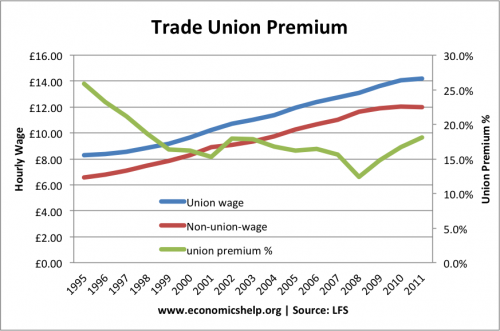
Typically those in trade unions have received a higher wage than non-unionised workers. The ‘premium’ of being in a trade union has declined by a small amount – though there may be many factors affecting wage part from the bargaining power of a trade union.

Brilliant work by you –
broad coverage, self-explanatory graphs and impartial analysis
to compare and contrast TU movement history and strategies to reverse TU decline in the uk and usa